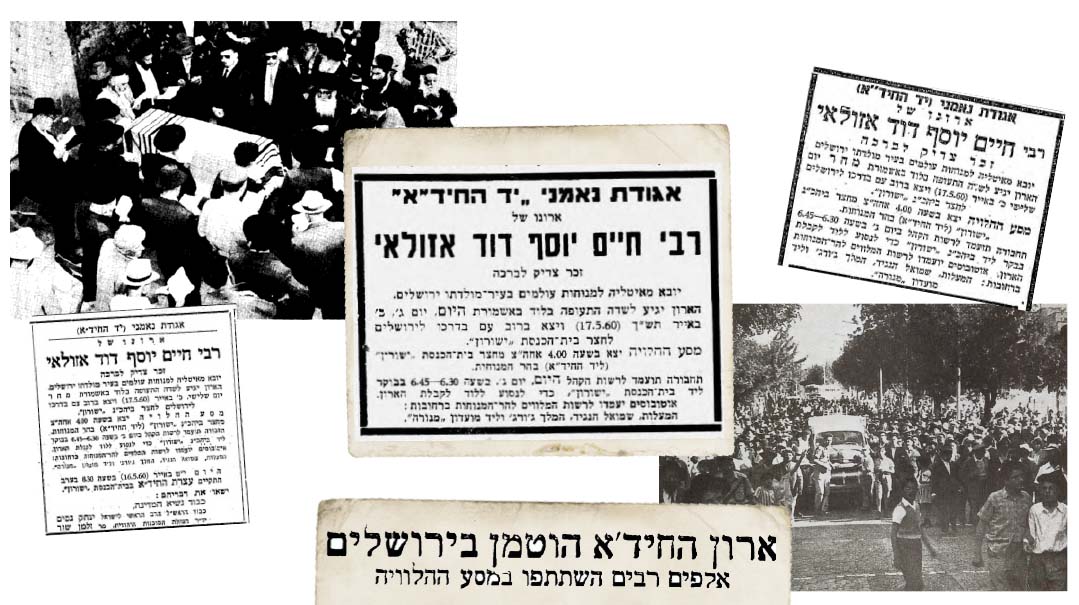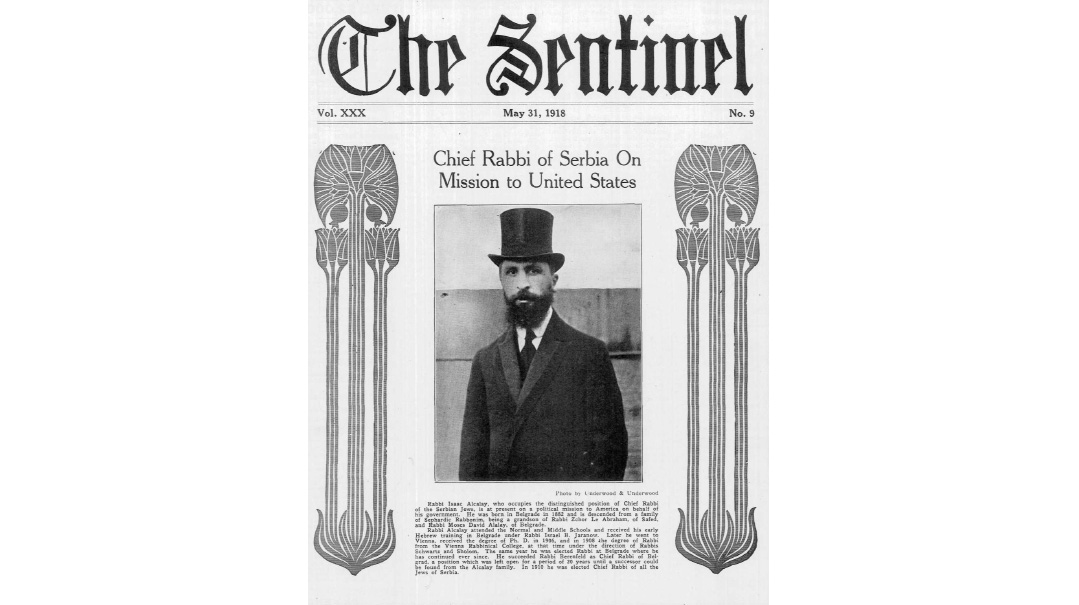Home at Last
| December 21, 2021Clutching the casket’s opening, he declared, “Our great rav the Chida, I’m incapable of this task, please arrange it on your own!”

Title: Home at Last
Location: Jerusalem
Document: Newspaper Reports and Photos from the Reburial of the Chida
Time: May 1960
Born into an aristocratic home in the Sephardic Old Yishuv of Yerushalayim, Rav Chaim Yosef David Azulai (1724–1806), known by his acronym, the Chida, would gain renown throughout the Jewish world of his day and beyond. Rabbi, kabbalist, and brilliant talmid chacham, the Chida had historic impact due both to his unmatched literary output, and to his decades-long career as a shadar — fundraiser in both Europe and North Africa.
Initially dispatched by the Sephardic Jewish community of Chevron in 1752, he’d seldom return to his homeland for the remainder of his life. Together with his fundraising duties, he also served as a rabbi for several Jewish communities of the diaspora, and utilized the opportunity to get acquainted with rabbinical leaders across the spectrum.
He also pursued his bibliographical hobby, perusing libraries and archives. Along the way he recorded his analysis of Jewish history, as well as a diary of his travels; both continue to serve as invaluable resources on Jewish life of the 18th century.
In 1772 he began a journey from which he’d never return. The northern Italian city of Livorno prevailed upon him to serve as their spiritual guide, while he engaged in an intensive project to publish his many works. He was buried in Livorno upon his passing in 1806.
On the occasion of his 150th yahrtzeit in 1956, Chief Rabbi Rav Yitzchak Nissim initiated a project to rebury the Chida in Yerushalayim, his birthplace. Working together with Livorno native Dr. Shlomo Umberto Nahon, they lobbied for permission from the Livorno Jewish community to arrange the transfer. Assisting them was another Livorno native, longtime chief rabbi of Rome Rabbi Elio Toaff.
Four years of logistical arrangements followed, until finally, on 20 Iyar 1960, the Chida’s remains arrived at Lod Airport. Rav Yitzchak Nissim appointed a rabbinical committee headed by Rav Mordechai Eliyahu to oversee the actual burial arrangements. In a striking testimony, Rav Eliyahu related that when they approached the coffin with trepidation to ensure that all was in order following the in-flight jostling, he grew fearful to move the holy bones himself.
Clutching the casket’s opening, he declared, “Our great rav the Chida, I’m incapable of this task, please arrange it on your own!”
This was followed by a chilling rattling sound from inside the coffin. The other rabbis present fainted. Rav Mordechai Eliyahu begged the Chida’s forgiveness and the coffin was resealed.
The funeral procession proceeded to Yerushalayim, where Rav Nissim had arranged that it should commence from the Yeshurun Synagogue on King George Street. The city of Yerushalayim entirely shut down; all stores were ordered closed and traffic halted, while the Jewish People accompanied one of the greatest sages of two centuries prior to his final resting place.
Rav Eliyahu arranged the purchase of a prominent plot at the cemetery’s entrance. The wording of the Livorno matzeivah was inscribed on the new one. In recognition for his efforts to respectfully carry out the reburial to fruition, Rav Mordechai Eliyahu merited to be buried next to the Chida upon his passing in June 2010.
“And you shall take up my bones from here”
Not far from the Chida are three other prewar Torah leaders who were reburied on Har Hamenuchos. In 1958, the nephews of Rav Menachem Ziemba brought his remains from the ruins of the Warsaw Ghetto, where he had been shot by the Nazis during the uprising. That same year, Rav Meir Shapiro’s remains were transferred from Lublin by his brother. And in 1963, Rabbi Harry Bronstein and others brought the remains of Rav Yosef Yozel Horowitz, the Alter of Novardok, from Kiev.
An Aron of Another Kind
Aside from the aron of the Chida, Dr. Nahon initiated a project in 1952 to bring over 40 aronei kodesh from abandoned Italian synagogues to shuls in Yerushalayim, Ramat Gan, Tel Aviv, Haifa, and other cities. One of these is the aron kodesh of Mantua, which graces the Ponevezh Yeshivah in Bnei Brak.
(Originally featured in Mishpacha, Issue 891)
Oops! We could not locate your form.






